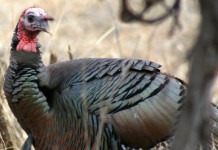A recent sutdy from NOAA’s National Weather Service highlights the danger lightning poses to outdoorsmen and women, notably anglers.
The research showed that 64 percent of lightning deaths since 2006 occurred while people were participating in leisure activities, with fishing topping the list at 26 deaths, according to a news release.
John Jensenius, a lightning safety specialist with the National Weather Service, conducted the study by examining demographic information for 238 deaths attributed to lightning during the past seven years.Of 152 deaths associated with leisure activities, fishing is followed by camping (15 deaths), boating (14 deaths), soccer (12 deaths) and golf (eight deaths). The remaining 77 people were struck by lightning while participating in a number of other activities including at the beach, swimming, walking and running, riding recreational vehicles and picnicking or relaxing in their yard.
Between 2006 and 2012, 82 percent of people killed by lightning were male, according to the release.Jensenius said the large number of fishing, camping and boating lightning deaths may occur because these activities require extra time to get to a safe place.
“People often wait far too long to head to safety when a storm is approaching, and that puts them in a dangerous and potentially deadly situation,” he said in the release.
Prior to the lightning safety campaign, lightning killed an average of 73 people each year in the United States. Since the National Weather Service launched the campaign, the average has dropped to 37. Seven people have died of lightning strikes this year, according to the release.
The best way for people to protect themselves against lightning injury or death is to monitor the weather and postpone or cancel outdoor activities when thunderstorms are in the forecast. Lightning can strike from 10 miles away, so if people can hear thunder, they are in danger of being struck by lightning, according to the release.






















